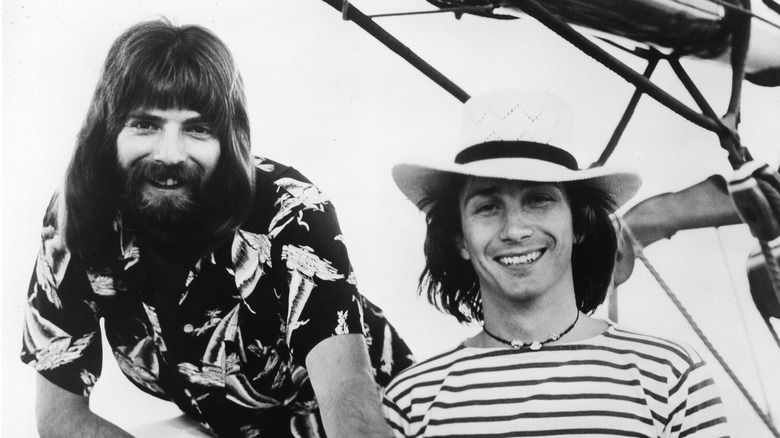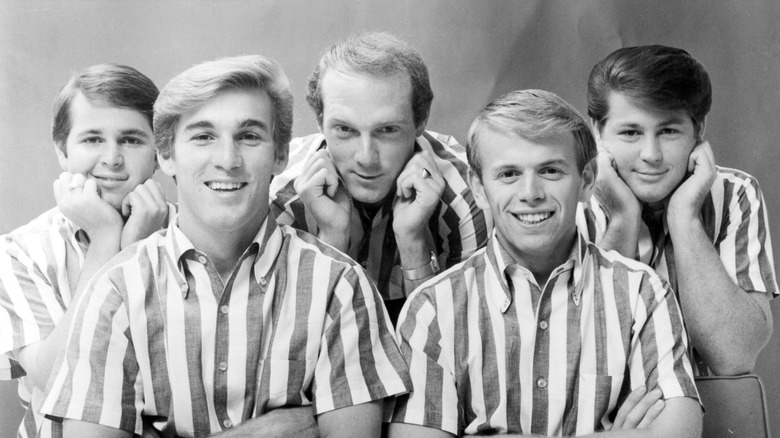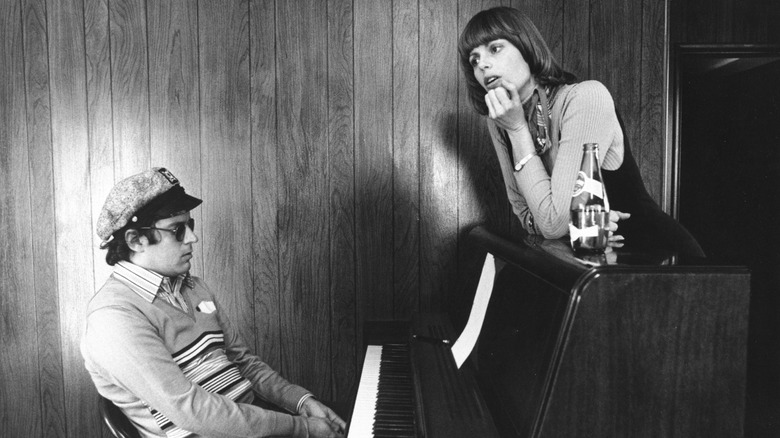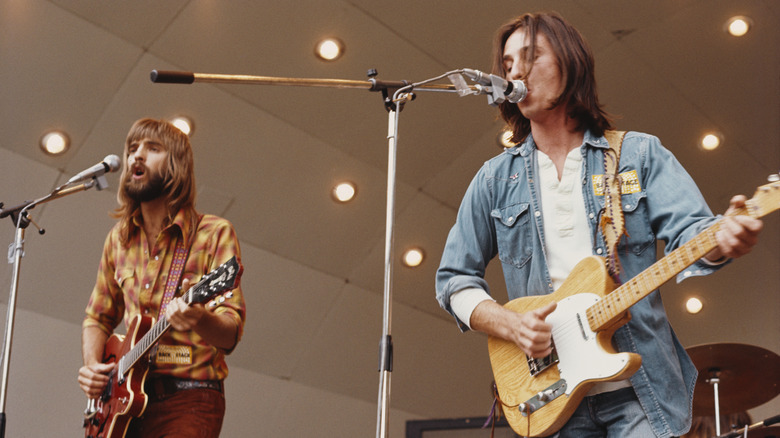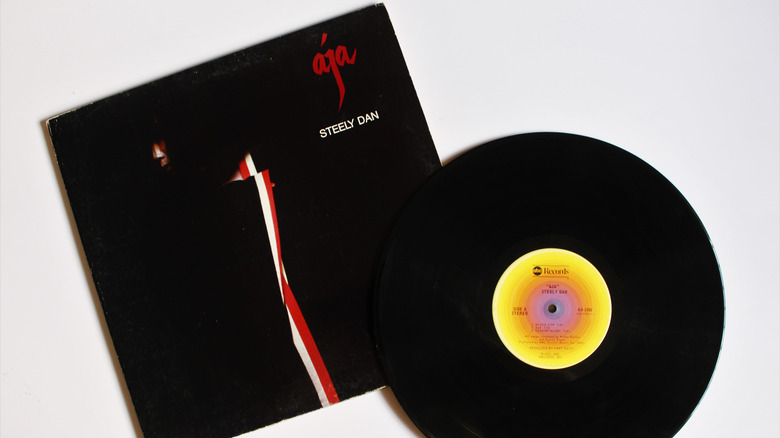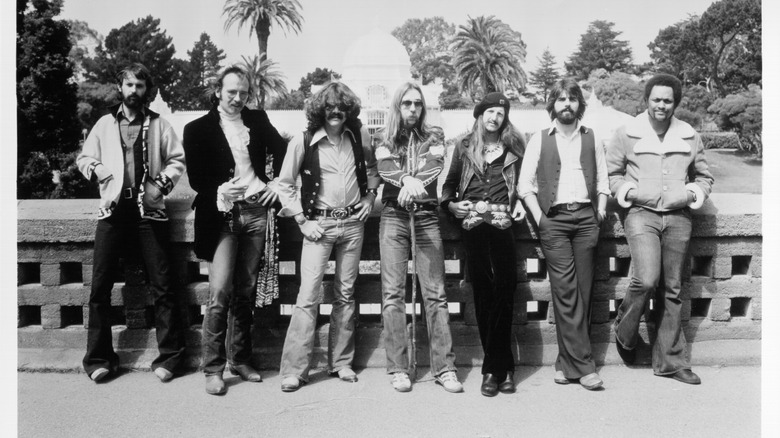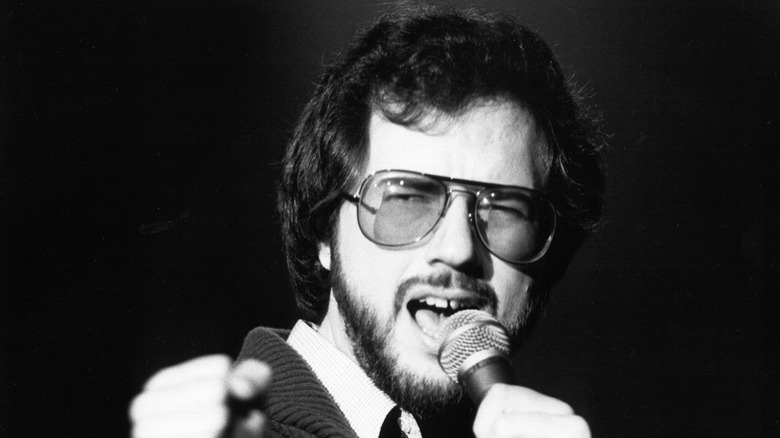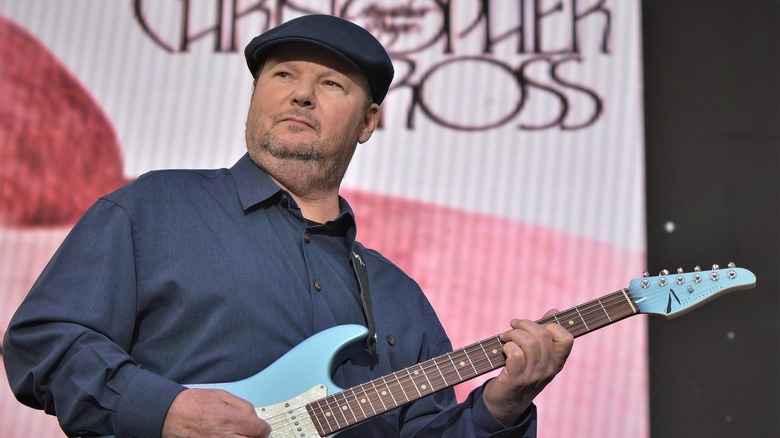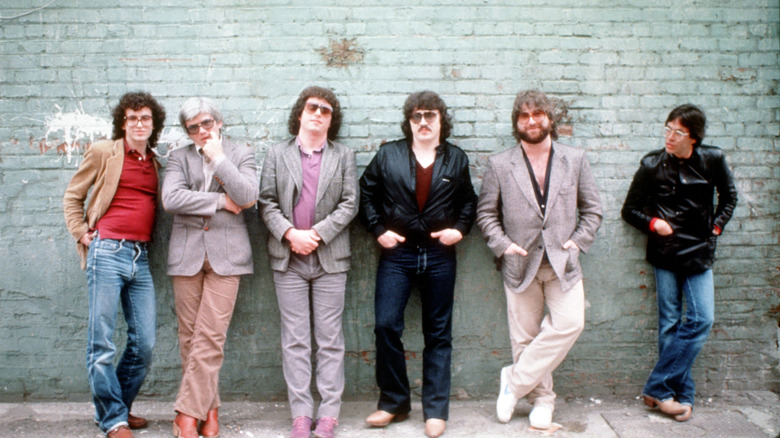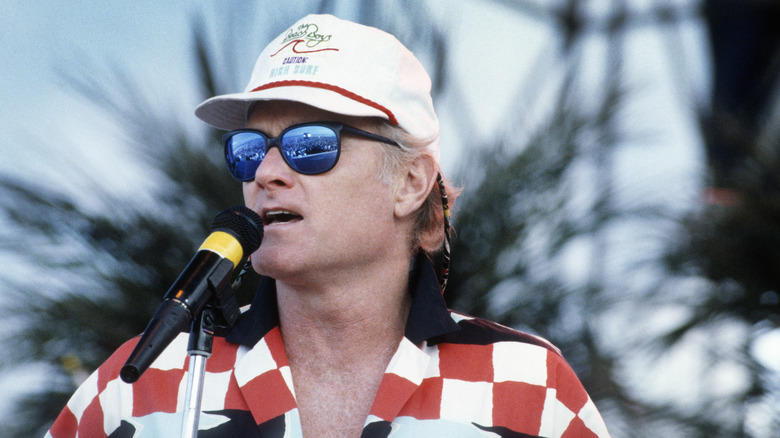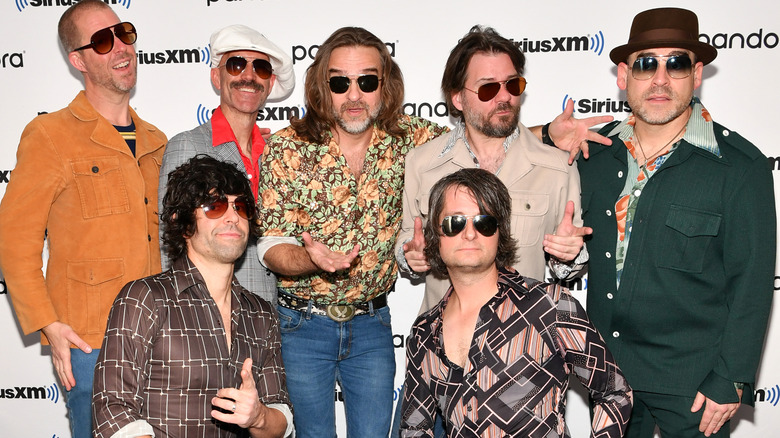The Bizarre History Of Yacht Rock Music
Popular music has always been complex. Different musical styles break up into infinite sub-genres — what started off as rock 'n' roll has splintered into dozens of sub-genres, and even the considerably younger musical genre of rap has splintered into several distinct styles. And each of those sub-genres then splinters as musicians innovate and reinvent the form.
None of this is science, though, so it's easy to get lost down rabbit holes when discussing what bands or songs belong in what genre or sub-genre. Yacht rock is a perfect example: None of the artists currently considered to be yacht rockers called themselves that at the time or were even aware that they were carving out a distinct sub-genre of rock music. The whole idea of yacht rock is a modern invention — and yet it perfectly describes a specific type of music that ruled pop culture roughly between 1975 and 1985.
What was yacht rock? It's a soft rock musical style, sometimes called the California sound, exemplified by smoothness and melody — these weren't exactly bangers, but that doesn't mean they were bad. Yacht rock could be very musically complex, incorporating elements of jazz into their compositions. The songs were usually introspective and did not engage with politics or current events at all — they were frictionless. Imagine a wealthy white man sailing on his yacht in 1980, and the music he's listening to in your imagination is what we're talking about. Here's the bizarre history of yacht rock.
The term was coined in 2005
Although the roots of yacht rock arguably go back to the 1960s, the history of yacht rock begins in 2005. That's because prior to that year, the term and concept of yacht rock simply didn't exist.
According to Rolling Stone, it all began on June 26, 2005, when the 12-episode web series "Yacht Rock" was released by Channel 101. As explained by Mental Floss, the series was a lovingly mocking look back at the smooth music of the late 1970s and early 1980s, written and directed by J.D. Ryznar, produced David B. Lyons and Hunter D. Stair, and hosted by Steve Huey, a former editor at AllMusic. MasterClass notes that the series was fictional — it depicted rockers like Kenny Loggins and Michael McDonald as a bunch of goofy friends hanging out and composing the smoothest rock music possible.
Ryznar and company were making gentle fun of those soft rock musicians, but the concept of yacht rock was so obviously appropriate it became viral. They defined it as perfectly produced, with a high level of musicianship and harmonic sophistication (in fact, far from being bad music, many yacht rock songs have been sampled numerous times by modern artists), and imbued with the vibe and sound of 1970s Los Angeles. Although many yacht rock songs do have nautical references, it's not necessary to be considered yacht rock.
The roots of yacht rock go back to the 1960s
Although not all yacht rock songs reference the ocean, yachts, or the beach, the distant roots of the sound and the vibe go back to 1961. That's the year The Beach Boys was formed. As noted by Jacobin Magazine, the cheerful fun in the sun beach aesthetic of The Beach Boys' sound provides the fundamental template for yacht rock's sound. What elevated The Beach Boys was the songwriting craft of Brian Wilson — without his subtle genius, all that was left was the perfect production standards and sunny vibe. As noted by Warm 106.9, the band's classic song "Sloop John B" is often cited as a clear influence on the sailing-obsessed soft rock that hit the charts a decade later.
In fact, as noted by MeTV, The Beach Boys' 1973 song "Sail On, Sailor" is considered a proto-yacht rock song. Because it was co-written by troubled musical genius Brian Wilson, the song isn't really yacht rock, but it holds many of the seeds, from its perfect production to the jazzy complexity hidden under mellow good-time vibes. And everything came full circle in 1988 when The Beach Boys released their Number One hit, "Kokomo," a song Stereogum describes as "extremely boring and self-satisfied yacht-rock." Singer Mark McGrath cites "Kokomo" as probably the last legitimate yacht rock song to ever be released.
Two foundational groups form
It wasn't just the California vibe and sailing imagery that yacht rock took from The Beach Boys. As noted by The Guardian, in the mid-1960s, a man named Daryl Dragon began playing keyboards with The Beach Boys as a backup musician. Dragon had a habit of wearing a ship captain's hat as part of his on-stage costume, underscoring the nautical theme and earning him the nickname "The Captain." According to Jacobin Magazine, Toni Tennille also toured with The Beach Boys. Dragon and Tennille married and, a few years later, formed the group Captain & Tennille, whose Grammy-winning song "Love Will Keep Us Together" is considered one of the earliest yacht rock hits.
Meanwhile, another foundational yacht rock band formed in 1972: Steely Dan. According to The Seattle Times, part of what defines yacht rock is the people involved. Members of The Doobie Brothers – especially Michael McDonald, Toto, and Steely Dan tend to be involved in some capacity (songwriting, background vocals, or performing) on most yacht rock songs. This was the inspiration for the original comedy sketch that birthed the whole concept. Steely Dan came to define the perfect production, jazzy musicality, and smooth melody lines of the genre. And as noted by Mental Floss, Steely Dan shared session musicians with many of their musical genre peers, explaining the somewhat similar sound produced by these different groups.
Loggins and Messina broke up in 1976
Many of the pieces that would form yacht rock existed long before the genre coalesced into a recognizable sound and vibe. Kenny Loggins and Jim Messina formed Loggins & Messina in 1971, and according to The Chicago Tribune, their 1975 album "Full Sail" is part of yacht rock legend. The album's cover art depicts Loggins and Messina on an actual yacht, looking pretty relaxed and very California. The album was held up at the very beginning of the "Yacht Rock" series to demonstrate what the creators of the series were talking about.
Loggins & Messina are crucial to the yacht rock story because they broke up. As noted by The Seattle Times, one of the features of yacht rock is the loose collaborations between a small group of musicians — and Kenny Loggins is a key member of that group. Loggins wrote many yacht rock classics recorded and performed by other artists, and Loggins himself often released his own versions of songs he gave to other artists, increasing his influence over the genre.
Loggins, now a free agent, worked with Michael McDonald of the Doobie Brothers several times as the core yacht rock musicians collaborated freely, ensuring a certain uniformity of sound and style that resulted in a recognizable sub-genre.
Steely Dan releases Aja
Mention the band Steely Dan in conjunction with the concept of yacht rock, and many people will have a passionate reaction. Yacht rock is often erroneously believed to be bad music and is frequently conflated with soft rock. But the opposite is true: According to MasterClass, part of what defines yacht rock is the harmonic sophistication and jazz influences of the music. In other words, yacht rock was often composed and recorded at a very high level of musical ability.
That's where Steely Dan comes in. Famed for their complex arrangements and overt jazz influences, the band produced smooth, melodic songs that perfectly captured the late-1970s California vibe. Rolling Stone considered the band's sixth studio album, "Aja," a pinnacle for the musical genre. The songs are intricate, the production is pristine, and the mood is mellow. Decider was even more enthusiastic in their praise, establishing the album as essential listening to any fan of yacht rock and notes that by the time Steely Dan (Walter Becker and Donald Fagan) recorded "Aja" they weren't really a band — they were two guys with a lot of session musicians, musicians who often played on other yacht rock bands' recordings, resulting in a similar sound on many of these records. And Michael McDonald of The Doobie Brothers even sings backup on some songs.
Ultimate Classic Rock ranks one of the songs from the "Aja," "Peg," as the second-best yacht rock song of all time and describes "Aja" as having "impeccable airtightness that falls somewhere between soft pop and jazz."
The Doobie Brothers release What a Fool Believes
Movements in music and the evolution of sub-genres usually have deep roots that go back invisibly into the past. But they often also have a key moment that clearly marks their beginning. As noted by Mental Floss, for yacht rock, that beginning comes in 1978 with the release of "What a Fool Believes" by The Doobie Brothers.
The song was written by Kenny Loggins and Michael McDonald. Not only did this song kick off the habit of collaboration between the artists that came to define this genre — IGN pegs it as number three on its list of the best yacht rock songs, describing the song as quirky and mellow, while according to Smooth Radio, the song is the ultimate example of what makes a yacht rock song. The song was a massive hit for The Doobie Brothers, one of the few non-disco hits that year.
The song is considered so "yachty," in fact, that according to Houstonia Magazine, the "Yacht Rock" series that defined the musical genre kicks off with an episode spoofing the writing of the song. The song is, indeed, kind of the platonic ideal of a yacht rock song: It's musically complex, smooth as heck, and lyrically focused on a lovelorn fool, a frequent topic of yacht rock songs. And, of course, it involves Loggins and McDonald.
Rupert Holmes releases Escape (The Piña Colada Song)
Mark McGrath, the lead singer of Sugar Ray, calls "Escape (The Piña Colada Song)" by Rupert Holmes the ultimate yacht rock song and an inspiration for all future yacht rock songs to follow. The song's connection to the genre is so clear that ABC News reports it was chosen for inclusion in the "NOW That's What I Call Yacht Rock" compilation album.
It's easy to see why the song (and the album containing it, 1979's "Partners in Crime") is what a computer algorithm would create if tasked with composing a yacht rock song. As noted by Rolling Stone, Holmes displays the musicianship of Steely Dan while singing with the exuberance of Barry Manilow. That combination of mellow, smooth delivery and complex song arrangements, and a distinctly California vibe make this an iconic example of yacht rock. As MasterClass notes, the song's clean production links it to other yacht rock songs because it eliminates mistakes or rough spots and offers the illusion of smooth perfection.
The song is also one of the most enduring and well-known yacht rock songs of all time. If you're trying to explain yacht rock to someone, this is the song to use as an example.
The high point of yacht rock: Christopher Cross releases Sailing
The unquestioned high point of yacht rock came in 1980. Songs from bands associated with this genre of music had been big hits before, but that year a yacht rock album dominated pop culture, ensuring that this style of music would be remembered and defined decades later. We're talking about, of course, "Sailing" by Christopher Cross.
Ultimate Classic Rock reports the song was a smash hit, earning Cross several Grammy Awards, including Record of the Year, Song of the Year, and Best Arrangement. Its yacht rock cred begins with its title and themes — it's literally about sailing, presumably on some sort of yacht (Cross doesn't seem the type to sail on anything less). The song is smooth as glass but extremely complex, combining strings, open-tuned arpeggios, and what Rolling Stone calls "an elegant pop classicism." And as Jacobin Magazine notes, the song features backing vocals from none other than the artistic glue that holds the genre together, Michael McDonald.
"Sailing," and the album it hailed from, remain the most successful examples of yacht rock, a pinnacle of sales and awards both Cross and the genre never managed again. No one knew they were part of the yacht rock movement at the time or that it was all (slowly) downhill from there.
Toto ties it all together
One of the characteristics of yacht rock, as noted by Mental Floss, is the extremely high level of musicianship on the records — largely due to the use of professional session musicians that were shared by yacht rock groups like Steely Dan. In the late 1970s, some of those session musicians decided to form their own band, and Toto was born. This was a key moment: As noted by the man who helped define yacht rock, J.D. Ryznar, one way to identify a yacht rock song is to ask if members of Toto played on it.
In 1982, Toto released "Toto IV," which Smooth Radio noted contains two all-time yacht rock classics in "Rosanna" and "Africa." Vinyl Me, Please calls "Toto IV" a perfect introduction to the musical genre, which makes sense since the members of Toto were involved in so many recordings we now consider to be yacht rock.
But Toto was involved in another project in 1982, one that proves how the yacht rock sound traveled through session musicians: Michael Jackson's "Thriller." As reported by NOW Magazine, Toto was heavily involved with the album, and Toto keyboardist Steve Porcaro even contributed a classic yacht rock track that became the fifth Top Ten song from the album (per Rolling Stone): "Human Nature." Porcaro originally wrote it for Toto but accidentally included it on a tape of demos for producer Quincy Jones — who immediately loved it.
Kokomo: Yacht rock's last gasp
The heyday of this musical genre was between roughly 1975 and 1985. By the late 1980s, musical tastes had shifted, and most yacht rockers found themselves fading off the charts. But there was one final gasp of the genre in 1988 when the legendary band The Beach Boys released their No.1 hit on the Billboard Hot 100, "Kokomo."
Despite its success, the song is widely hated (Mel Magazine shared their extreme dislike for the song and even Mike Love), but it's definitely a yacht rock song. According to Sugar Ray lead singer Mark McGrath, it's likely the last yacht rock song to be released. By the time The Beach Boys began working on it, however, they weren't too concerned about quality — as noted by EW.com, the band hadn't been on the charts in years, didn't have a record contract, and had been reduced to playing Oldies tours to pay the bills. The band accepted the invitation to contribute a song to the soundtrack of the Tom Cruise and Elisabeth Shue romantic comedy, "Cocktail" largely for the money and actually left the composition of the song to John Phillips, Scott McKenzie, and Terry Melcher, giving the song the traditional session-player touch of all yacht rock songs.
The song's yacht rock bona-fides are pretty clear — in fact, as Stereogum notes, the original demo makes its yacht rock roots very, very clear. But even The Beach Boys' version with its earworm chorus retains the smooth, slickly-produced sound that marks all yacht rock tunes.
The resurgence of yacht rock
After being established as a distinct genre of music by the "Yacht Rock" web series in 2005, yacht rock enjoyed a period of viral fame. Everyone who came across the term quickly realized it actually made sense to regard these songs as a specific style of soft rock, and there was a lot of buzz around the topic. But all buzz fades, and after a few years, yacht rock was no longer an exciting new idea — it was an accepted truth.
But in recent years, the genre has made a comeback, infiltrating pop culture for the second time. A seminal moment in this comeback was the release of "The Blue Jean Committee" in 2018. As noted by 100.9 The Eagle, "The Blue Jean Committee" is a "mockumentary" that has actually served as an introduction to yacht rock for a whole new generation of people. Esquire reports that the show (and the "fake yacht rock band" at its center) was created by comedians Fred Armisen and Bill Hader for their TV series "Documentary Now!" But they went as far as actually writing songs for the band — and even made a music video showcasing the very yacht rocky song "Catalina Breeze," eventually releasing an entire EP, according to Wired. Suddenly, yacht rock was on everyone's mind again, more than 15 years after the initial phenomenon and more than 40 years since the actual musical era ended.
Yacht rock is modern again
As noted by The Guardian, yacht rock is experiencing a full-on reappraisal. Long considered to be trite and boring, emblematic of the insincere late 1970s and early 1980s era, a new appreciation for the very things that make these songs yacht rock is developing. One key reason is that clear production noted by MasterClass — yacht rock songs sound timeless and still slap today because they weren't thrown together. The bands spent a lot of time and money and care to make every song sound amazing, which has helped them pass the test of time. And recent years have seen bands like The Yacht Rock Revue achieve surprising success in the genre, as noted by The Atlanta Journal-Constitution.
As InsideHook notes, the rise of Internet culture has helped people rediscover and appreciate yacht rock. Younger generations have grown up in a world where they can listen to anything, any time they want. The result has been a softening of genre edges, and the adoption of old, outdated musical trends. There's a whole new group of soft rock bands that aren't covering yacht rock songs; they're writing new ones.
And as reported by MTV, yacht rock original gangsters are also releasing new music, proving that the genre has fresh legs. According to NPR, in 2017, Kenny Loggins and Michael McDonald collaborated with bassist and singer Thundercat on the song "Show You the Way." Suffice it to say, this ship (or should we say yacht?) is still sailing.
